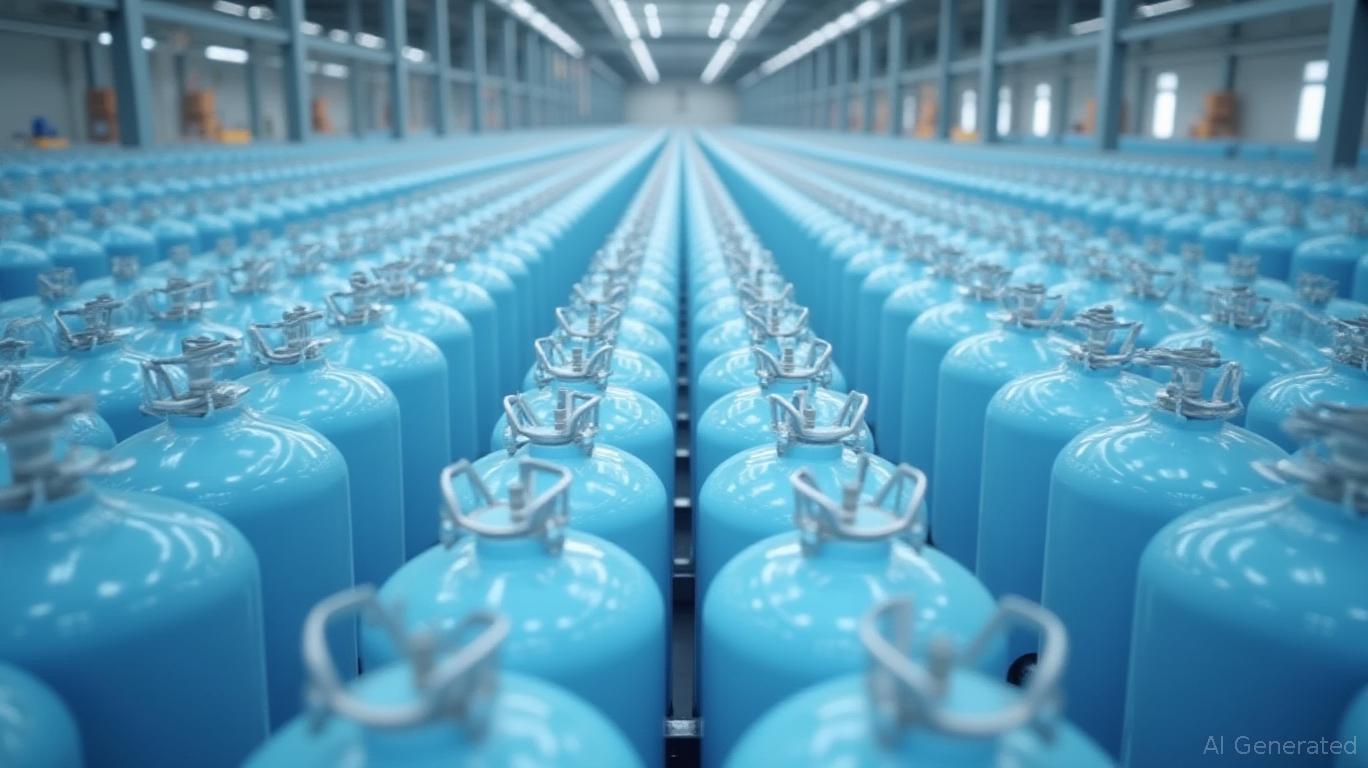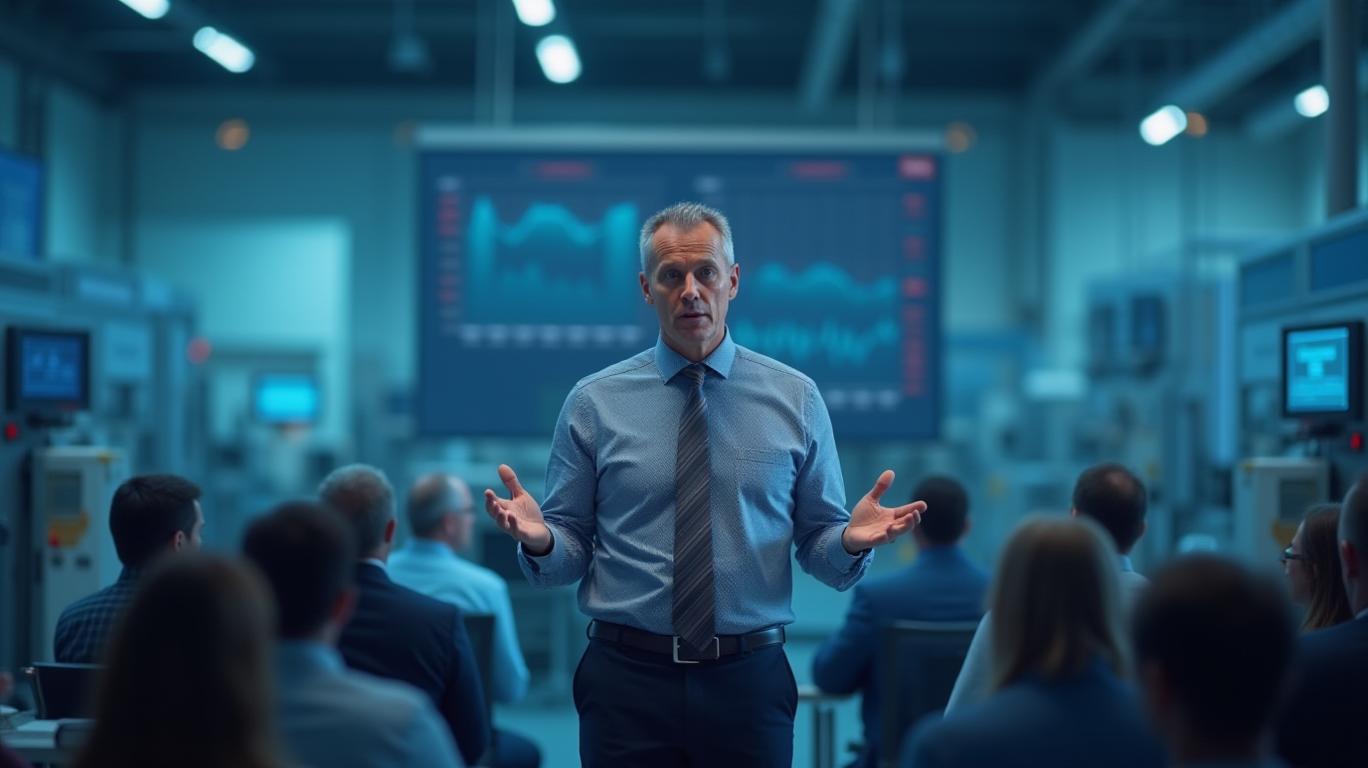Hexagon Purus ASA's Q1 2025 Earnings: Navigating Challenges with Strategic Resilience
Hexagon Purus ASA (HPURF), a global leader in hydrogen storage solutions, reported a mixed performance in its Q1 2025 earnings call. While the company faces significant headwinds—including a steep revenue decline and the loss of a major customer—its strategic moves to diversify markets, reduce costs, and expand into high-growth sectors offer reasons for cautious optimism. Below is an analysis of its strengths, vulnerabilities, and long-term potential.

Key Positive Developments
1. Commercial Momentum in Hydrogen Transit Buses
Hexagon Purus solidified its position in the hydrogen transit bus sector by extending a multi-year supply agreement with Solaris, a leading European manufacturer. This partnership underscores the growing demand for zero-emission public transport, a market projected to grow at a CAGR of 22% through 2030, according to industry analysts.
2. Rail Sector Breakthrough
The company secured a multi-year deal with Stadler for hydrogen storage systems targeting California’s rail projects. This marks a strategic pivot into rail, a sector with $1.2 trillion in global green infrastructure investments planned by 2030, according to the International Energy Agency (IEA).
3. Geographic Diversification
Hexagon Purus secured its first orders in the Middle East and Africa through a partnership with Egyptian bus OEM MCV. This expansion aligns with the Middle East’s 2030 net-zero goals, which could drive demand for hydrogen storage infrastructure.
4. Cost Reduction Progress
The EUR200 million cost-cutting program is on track, with restructuring efforts already yielding EUR43 million in savings. Management emphasized this initiative will extend the company’s “cash runway,” critical as it navigates a challenging market.
Challenges and Risks
1. Severe Revenue Decline
The company reported a 44% year-over-year (YoY) revenue drop in Q1 2025. This stark decline highlights reliance on volatile markets and key clients, with Nikola—formerly its largest customer in heavy-duty trucks—accounting for a significant portion of lost revenue after filing for bankruptcy.
2. Delays in Green Hydrogen Projects
European green hydrogen projects are lagging due to regulatory and funding hurdles. This delay impacts Hexagon’s infrastructure revenue, as Europe aims to install 6GW of green hydrogen capacity by 2027, a timeline now in doubt.
3. U.S. Policy Uncertainty
A shift in U.S. administration policy has weakened demand visibility for battery electric vehicles (BEVs), creating uncertainty about hydrogen’s competitive landscape. While hydrogen gains relative ground against BEVs, the overall market trajectory remains unclear.
4. GuruFocus Warning Signs
GuruFocus flagged two red flags for HPURF, likely tied to deteriorating margins or rising debt. Investors should monitor its debt-to-equity ratio, currently at 1.5x, which could strain liquidity if revenue recovery falters.
Q&A Insights and Strategic Shifts
- Cost-Cutting in Germany: CEO Martin Hole confirmed significant reductions in German operations, though specifics remain undisclosed. This suggests potential plant closures or layoffs to cut fixed costs.
- Aerospace Growth: Hexagon Purus supplies two of three major North American space exploration companies, with activity levels rising. The aerospace sector could become a $500 million revenue stream by 2030, offering diversification beyond automotive.
- Factory Portfolio Review: Management is considering asset sales or closures to align capacity with demand, a move that could improve margins but risks operational disruptions.
Conclusion: A Balancing Act Between Risk and Reward
Hexagon Purus faces formidable challenges, including a revenue freefall and customer losses, but its strategic pivots into rail, aerospace, and emerging markets suggest a path to recovery. Key metrics to watch include:
- Revenue Diversification: Hydro and distribution segments now contribute meaningfully to revenue, reducing reliance on automotive.
- Cost Savings: EUR200 million cost cuts could lower the break-even point by 15–20%, per management estimates.
- Geopolitical Tailwinds: Global green hydrogen investment is expected to hit $1.2 trillion by 2030, with Hexagon’s technology positioned to capture a share of this boom.
However, risks remain. The loss of Nikola and delays in European projects highlight the fragility of supply chains and customer concentration. Investors must weigh these against the company’s progress in high-growth sectors.
In summary, Hexagon Purus is a high-risk, high-reward play for investors willing to bet on hydrogen’s long-term potential. While short-term hurdles are significant, its strategic moves into rail, aerospace, and emerging markets—combined with aggressive cost discipline—position it to capitalize on the $11 trillion clean energy transition expected by 2050. The next 12–18 months will be critical in determining whether these moves can stabilize its financial footing and unlock shareholder value.
This analysis is for informational purposes only and does not constitute financial advice. Always conduct thorough research before making investment decisions.


_442a2dcc1749832873286.jpeg)
_e68fac6d1749831664430.jpeg)





